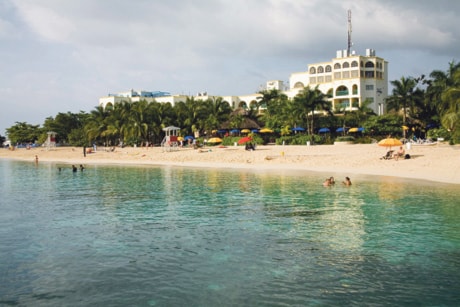MONTEGO BAY, Jamaica — If you’re among the hordes of snow-weary Canadians flocking to all-inclusive resorts in the Caribbean, it’s easy to spend your week or two in the sun without seeing much of the country you’re in.
You’re surrounded by other tourists basking on well-groomed beaches and eating food often modelled on dishes you could have back home.
Even those who venture away from the resort usually opt for guided tours. Still surrounded by fellow travellers, you get shown mountains or waterfalls, or go shopping in areas designed for tourists, far removed from the daily routine of the locals.
But there is an alternative.
Set up in 1968, the Meet The People program, run by the Jamaica Tourist Board, matches visitors with local residents who have similar interests for a low-key look at real island life.
When my wife and I signed up during a trip to Montego Bay this winter, we and our two children were paired with Erica, a middle-aged small-business owner, who picked us up in her mini-van and took us to her granddaughter’s school, where our kids could meet others their age.
Like the 300 other Jamaicans who take part in the program, Erica is a volunteer and is not paid for her time.
Immediately, our two boys delighted in seeing the Montego Bay Christian Academy, a private school near the top of a hill overlooking the city of 100,000. With no other tourists in sight, we were quickly immersed in the morning routine of school life.
Classes are held in open-air buildings and heating is unnecessary because of the climate. Children in one classroom learned phonetics as the leaves of a palm tree rustled outside. In another room, kids took turns in the small computer lab, much like the one at my children’s school.
The private school has a lower student-teacher ratio than public schools, Erica explained, with about 20 kids for each class guided by a teacher and teacher’s aide. Every school has a uniform, although my eldest son was keen to point out that the kids at Montego Bay Christian Academy had a choice of four different colours, unlike his school’s mandatory blue-and-white uniform back home.
It’s this immersion in daily life that is the aim of the Meet The People program.
At recess, the children kicked around a soccer ball and lined up to buy snacks from the school store. A couple of the more curious ventured over to say hi to us. Our children offered them some Canadian snacks. A fruit leather became a conversation piece.
It is excursions like these where you see how Jamaicans — everyday citizens, not just those who work in the tourism sector — have earned their reputation for being friendly.
The school is just one of many possible destinations for Meet The People participants. Depending on your interests, you could be taken to a hospital, a church, a soccer game or even to someone’s home for tea and a chat, according to Norma Taylor, the program’s co-ordinator.
“It’s like you’re embedded in the social life,” Taylor says. “You get to see a little slice of what Jamaicans have to offer in terms of their culture.”
Granted, Meet The People is showing us a nicer part of Jamaican life. No one took us through the slums of Kingston, for example.
But Erica didn’t gloss over her country’s crime problems. As we wound our way down the mountain and into downtown Montego Bay, we rolled by a police check stop, where officers armed with what looked like submachine guns were pulling over cars.
“They’re looking for things that shouldn’t be there . . . guns or drugs,” Erica said.
She also didn’t avoid some of the poorer areas of Montego Bay, where small houses have been assembled from what appear to be scrap materials and the streets are pitted with large potholes. She talked of government programs to help people buy homes and the fact that many residents take 15 years or more to build houses, room by room, because mortgages are so hard to come by.
On another excursion, a tour guide showed us a neighbourhood of upscale homes and said that some of the owners were likely drug dealers — “sidewalk pharmacists,” she said with a grin.
Near the end of the tour, Erica took us to a small restaurant for Jamaican patties. It was far from fancy and set near the densely crowded, noisy centre of town, but offered real Jamaican food, much more authentic than the roast chicken at our resort.
Bustling with the noise of car horns and the smell of spicy food, it seemed to show the real Jamaica.
Later, we returned to our gated resort and rejoined the hundreds of tourists from Canada, the United States and other countries enjoying cocktails and a buffet by the private beach. It’s a nice resort with all the comforts of home, but it felt as if we had left Jamaica behind.
If you go:
• Most Canadian airlines and charter companies offer flights to Sangster International Airport, which is a 10-minute drive from Montego Bay and about an hour’s drive from other resort areas such as Negril and Ocho Rios.
• Jamaica has its own dollar but prices in tourist areas are normally listed in U.S. dollars, which are widely accepted.
• Taxis and guided bus tours are the best way to get around. There are plenty of rental cars available, but you’ll need to adjust to driving on the left along small, windy streets.
• Meet The People website: http://www.visitjamaica.com/about-jamaica/meet-people.aspx
